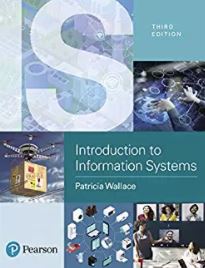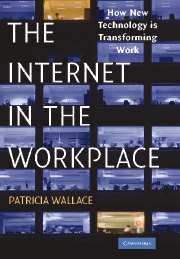Papers and Book Chapters
|
Wallace, P. (2017). UMUC's Virtual University: Expanding access for non-traditional students.. In J.F. Ebersole & W. Patrick (Eds.),Learning at the Speed of Light. Albany, NY: Hudson Whitman/Excelsior College Press. Wallace, P. (2017). Internet behavior. In Stein, J. (Ed.), Reference Module in Neuroscience and Biobehavioral Psychology. Amsterdam, The Netherlands: Elsevier. Wallace, P. (2014). Internet addiction disorder and youth. EMBO Reports, 15:1, 13-16. Wallace, P. (2013). Nurturing innovation through online learning. In L. Shavinina, (Ed.), The Routledge International Handbook of Innovation Education (pp. 430-441). New York, NY: Routledge Wallace, P. (2012). Internet behavior. In S. Ramachandran (Ed.), Encyclopedia of Human Behaviour, 2nd Ed. Oxford, UK: Elsevier. Wallace, P. (2011). M-Learning: Promises, perils, and challenges. New Horizons for Learning, IX(1). Birch, K., Blackburn, C., Brody, L., & Wallace, P. (2011). An online community for students who love STEM. Science, 334(6055), 467-468 Jones, C., & Wallace, P. (2010). The emerging role of informal networks in crisis communications and disaster recovery. In A.Przepiorka (Ed.), Internet in Psychological Research, Warsaw: Cardinal Stefan Wyszynski University Press. Wallace, P. (2009). Distance learning for gifted students: Outcomes for elementary, middle, and high school aged students. Journal for the Education of Tthe Gifted, 32(3), 295-320. Wallace, P. (2006). Leadership in the Internet age: Managing a diverse and dispersed workforce. In R. Gandossy, Tucker, E., and Verma, N. (Eds.), Workforce wake-up call . New York: John Wiley and Sons. Jones, C., & Wallace, P. (2007). Networks unleashed: Mobile communication and the evolution of networked organizations. In S. Kleinman (Ed.), Displacing Place: Mobile Communication in the 21st Century . New York : Peter Lang. http://displacingplace.org/_wsn/page5.html Wallace, P. (2006). Distance education for gifted students: Leveraging technology to expand academic options. High Ability Studies , 16(1), 77-86. Wallace, P. (2005). Blending instructional design principles with computer game design: The development of Descartes' Cove. Educational Multimedia and Hypermedia, 2005, Proceedings of the Association for the Advancement of Computing in Education , Montreal , Canada . Wallace, P. (2000). Privacy, control, and online choices. Wilson Quarterl y, Autumn. Wallace, P., and Riley, D.R. (2000). Databases, information architecture and knowledge discovery. In G. Bernbom (Ed.), Information Alchemy: The Art and Science of Knowledge Management . San Francisco : Jossey-Bass, Inc. Wallace, P. (1999). Successful virtual teams. Executive Excellence , October, 20. Wallace, P. (1999). Building the learning organization. KMWorld , September, 28. Cramer, J., and Wallace, P. (1990). Decision-making in Japan : A moving target. The Asian Wall Street Journal , February 22, 1990 . Wallace, P. (1990). Colleges should develop new ways to meet the training needs of business. The Chronicle of Higher Education, A36, December 19, 2002 . Cramer, J. and Wallace, P. (1990). Avoiding culture clash in a Japanese company. The Asian Wall Street Journal , 21, July 12, 1990 . Cramer, J. and Wallace, P. (1990). Overseas managers should train local staff. Japan Economic Journal, 9 , September 15, 1990 . Cramer, J., and Wallace, P. (1989). Culture gap hinders Japanese localization. The Asian Wall Street Journal, Manager's Journal , 19, June 29, 1989 . Wallace, P. (1975). Neurochemistry: Unraveling the mechanism of memory. Science , 190(4219), 1076-1078. Wallace, P. (1974). Complex environments: Effects on brain development. Science, 185 (4156), 1035-1037. |
 Introduction to Information Systems, 3rd Ed. (2018, Pearson)
Introduction to Information Systems, 3rd Ed. (2018, Pearson) The Internet in the Workplace (Cambridge University Press)
The Internet in the Workplace (Cambridge University Press)